Oral Health
5 min read
Aug 21, 2025
General Dental Care Statistics (U.S. & Global)
Dental health plays a crucial role in overall well-being, yet millions worldwide face barriers to routine care. This detailed statistics guide breaks down current dental health trends, costs, and challenges both in the United States and globally.
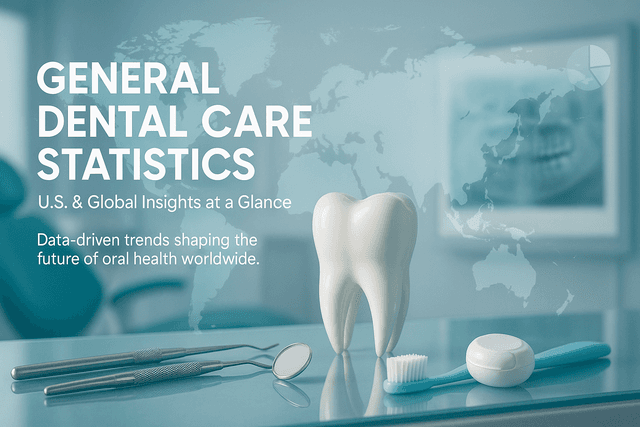
Prevalence of Cavities: A National and Global Issue
Cavities, or dental caries, are among the most widespread chronic diseases globally. Despite advances in dental technology, fluoride treatments, and public health campaigns, untreated tooth decay remains prevalent. This is not just a cosmetic issue; cavities can lead to pain, infection, and tooth loss if left untreated.
In the U.S., CDC data shows that almost 90% of adults have had at least one cavity in their lifetime. The NIDCR reports that untreated cavities are especially common in populations with limited access to dental care, such as low-income communities and minority groups.
Worldwide, the WHO reports that 2.5 billion people suffer from cavities in permanent teeth, and around 620 million children have cavities in primary (baby) teeth.
Global Prevalence of Cavities (Tooth Decay)
Population Group | Estimated Affected (Global) | % of Population Affected |
Total global population (all ages) | 3.6 billion people | ~45% |
Adults (permanent teeth) | 2.5 billion people | ~35% |
Children (primary/baby teeth) | 620 million children | ~40% of children globally |
Low-income populations | Disproportionately affected | N/A |
High-income countries | Lower prevalence but still significant | N/A |
Prevalence of Untreated Cavities by Age Group (U.S.)

This data illustrates a significant problem: many adults continue to face high rates of untreated dental decay. Preventive care can reduce these numbers, but lack of access and high costs remain barriers for millions.
Gum Disease: The Silent Epidemic
Gum disease, or periodontitis, is one of the most underdiagnosed and underestimated public health problems. Often called the "silent epidemic," gum disease can progress slowly without pain, leading to severe outcomes like tooth loss, jawbone deterioration, and increased risks for systemic health issues.
According to the UIC College of Dentistry, nearly half of adults over 30 in the U.S. suffer from some form of gum disease. Seniors are particularly vulnerable, with up to 70% affected.
Globally, the WHO and NCBI studies estimate that about 45% of adults have some level of periodontal disease, impacting both oral and systemic health.
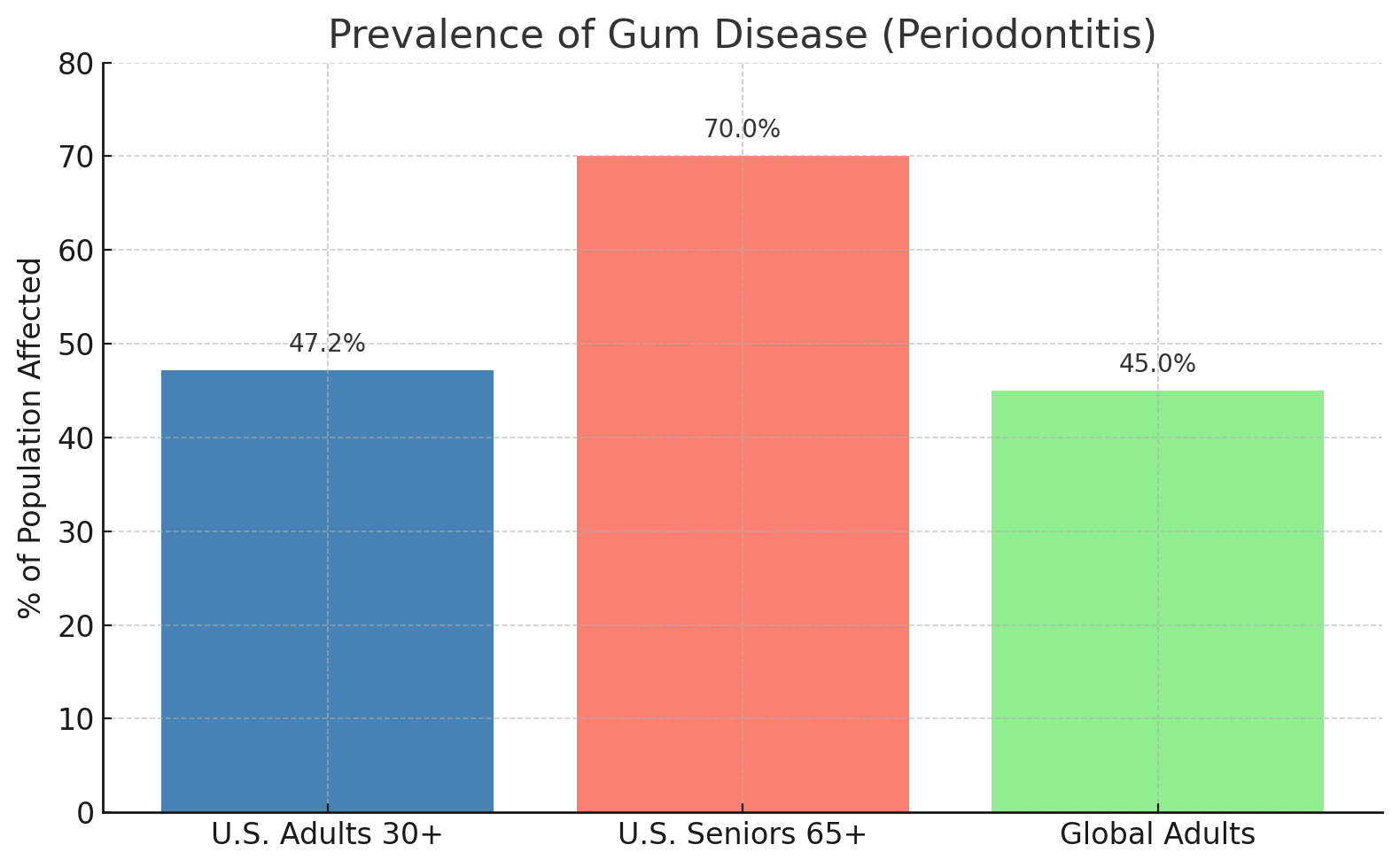
Poor oral hygiene, smoking, diabetes, and lack of professional dental care are primary risk factors. Gum disease is linked to heart disease, stroke, and even complications in pregnancy, making this a priority health issue.
Dental Visit Frequency & Tooth Loss
Regular dental visits are critical for early detection of oral diseases, but not everyone has access to consistent care. According to the CDC, while about two-thirds of U.S. adults visit the dentist annually, millions still avoid appointments due to cost, fear, or lack of coverage.
Tooth loss remains a serious consequence of poor dental care. Among adults aged 65 and older, CDC data shows that 13.2% have lost all their natural teeth, a condition called edentulism.
Tooth loss impacts more than just appearance. It affects nutrition, speech, and overall quality of life. Individuals without teeth are also more likely to suffer from social isolation and depression.
The Rising Cost of Dental Care
Dental care is expensive, especially in countries like the U.S. where insurance often does not cover routine dental needs. The National Health Expenditure Data indicates that total U.S. dental spending exceeded $136 billion in 2018, with nearly half paid out-of-pocket.
According to Investopedia, a single dental implant can cost upwards of $3,500, while routine cleanings can still cost nearly $100 without insurance. This financial burden discourages preventive care, leading to more severe issues down the road.
Average Out-of-Pocket Costs for Common Dental Procedures
Procedure | Average Cost (USD) |
Cleaning | $98 |
Filling | $185 |
Extraction | $317 |
Crown | $1,500 |
Implant | $3,500 |
Cost Distribution of Dental Procedures
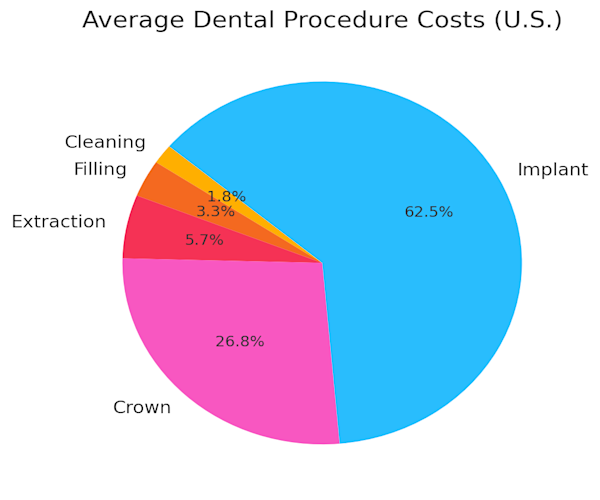
These costs illustrate why so many people delay care until problems become emergencies, often requiring even more expensive interventions.
Global Dental Care Statistics
Oral health problems are a global issue, affecting billions of people. According to the WHO:
3.6 billion people suffer from some form of oral disease.
2.5 billion people have cavities in their permanent teeth.
620 million children worldwide have cavities in baby teeth.
These numbers are more than statistics; they represent lost productivity, health complications, and emotional distress for families worldwide. The economic burden of dental care is estimated at $442 billion annually when combining treatment costs and productivity losses.
Local & State-Level Data (U.S.)
Dental health disparities vary significantly across states and regions. According to the Risas Dental Survey, some states experience higher rates of cavities due to diet, lack of fluoridation, and reduced access to care.
State-level cavity rates:
Highest average cavities per person:
Pennsylvania
New Jersey
Massachusetts
Lowest average cavities per person:
Georgia
Colorado
California
Similarly, the CDC's gum disease data shows higher prevalence of periodontitis in southern states, particularly among older adults.
These local trends emphasize the need for targeted public health interventions, especially in underserved areas.
The Cost of Inequality in Dental Care
Access to dental care is not evenly distributed. The CDC Health Equity Report shows that uninsured adults are more than twice as likely to have untreated cavities compared to those with private insurance.
Other disparities include:
Race: Black and Hispanic adults experience higher rates of untreated decay and tooth loss.
Income: Low-income adults often use emergency rooms for dental care, where treatment is limited to pain management rather than prevention.
Seniors: Medicare does not cover routine dental services, leaving older adults vulnerable to serious oral health complications.
Addressing these disparities requires systemic changes, including expanded insurance coverage and more community-based preventive care.
Why These Statistics Matter
These statistics go beyond dental offices; they highlight systemic public health issues. Poor oral health is linked to:
Heart disease
Diabetes complications
Respiratory infections
Cognitive decline in seniors
By investing in preventive care, education, and equitable access, we can reduce both the human and financial costs of dental disease.
What Are the Most Common Dental Health Issues Globally?
The most common dental health problems worldwide include cavities and gum disease. Cavities affect about 3.6 billion people, with 2.5 billion adults experiencing decay in permanent teeth and 620 million children affected in their baby teeth. Gum disease impacts nearly half of adults, often progressing silently until tooth loss or other complications occur. Both issues are preventable but remain widespread due to lack of access to care and education.
How Do Costs Influence Access to Dental Care?
High costs remain one of the biggest barriers to dental care. In the U.S., dental spending surpassed $136 billion in 2018, with many patients paying out-of-pocket for even basic services like cleanings and fillings. A single implant can cost $3,500 or more, discouraging preventive care. Globally, the financial burden of oral health is estimated at $442 billion annually, combining direct treatment costs and productivity losses.
Why Is Gum Disease Called a “Silent Epidemic”?
Gum disease is often referred to as the silent epidemic because it develops slowly and without pain, making it easy to overlook. Nearly half of U.S. adults over 30 have some form of it, and seniors are especially vulnerable. If left untreated, gum disease can lead to tooth loss, jawbone deterioration, and even systemic health risks like heart disease and diabetes complications, highlighting why early detection and treatment are essential.
How Do Dental Health Disparities Affect Certain Groups?
Disparities in dental care mean that low-income, minority, and uninsured populations often experience worse outcomes. For example, uninsured adults are more than twice as likely to have untreated cavities compared to those with private insurance. Seniors also face challenges since Medicare does not cover routine dental care. These gaps lead to higher rates of untreated decay, tooth loss, and even emergency room visits where long-term solutions are rarely provided.
Read Next
Related Posts
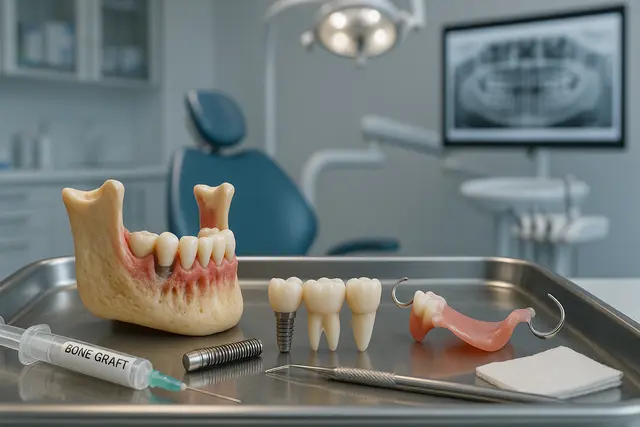
Oral Health
Tooth Replacement Options to Prevent Bone Loss
Losing a tooth isn’t just about appearance, it can have a lasting impact on your oral health, jawbone strength, and overall quality of life. When teeth go missing, the jawbone begins to shrink, which can change your bite, your facial structure, and even your confidence. Fortunately, modern dentistry offers several effective solutions to replace missing teeth and prevent further bone loss.
4 min read
Sep 26, 2025
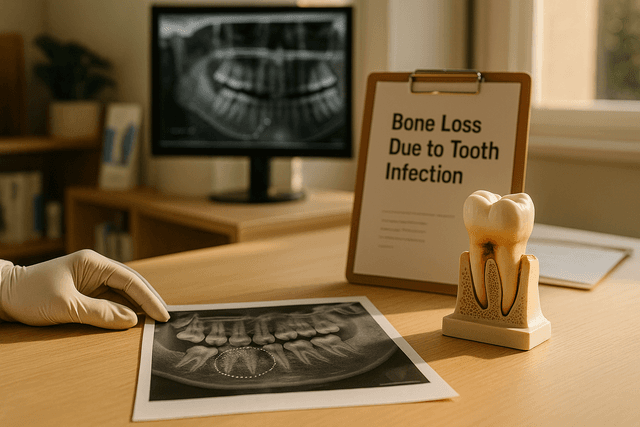
Oral Health
Bone Loss Due to Tooth Infection Explained: What It Means for Your Oral Health
A tooth infection isn’t just about pain, it can quietly damage the tissues around a tooth and even erode the jawbone that supports your smile. This guide explains how infections start, why they can lead to bone loss, the warning signs to watch for, and the treatments that can stop the spread and rebuild lost support.
5 min read
Sep 25, 2025
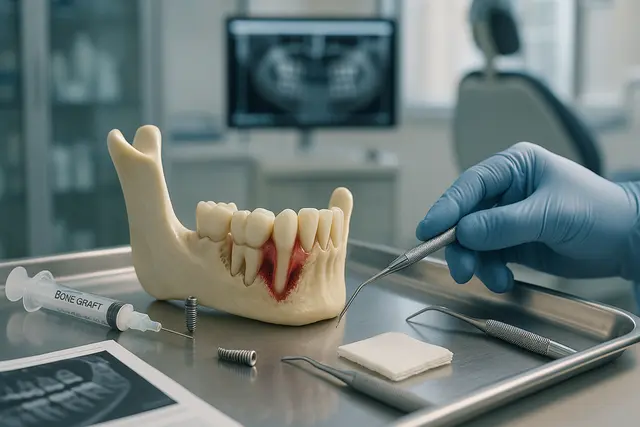
Oral Health
Understanding Bone Loss in Teeth: Causes and Treatments That Work
Bone loss in teeth is a silent threat that can compromise your smile, facial structure, and overall oral health. While it often goes unnoticed in the early stages, it can lead to serious consequences if left untreated. Understanding what causes dental bone loss, and how to prevent or manage it, is key to maintaining a strong, healthy foundation for your teeth.
5 min read
Sep 25, 2025
Don’t have time to research every dentist around you?
See why 30k+ patients trusted us